Do you have a small space but still want to create a beautiful succulent garden? Then this article is for you! In this guide, we’ll discuss the essential tips and tricks on how to start your very own miniature succulent garden in any size of space. We’ll also answer frequently asked questions about caring for these plants to ensure your succulent garden thrives.
Why Are Succulent Gardens Great?
Succulent gardens are ideal for small spaces because they require minimal maintenance. Not only do these plants come in a wide variety of shapes and sizes, but they also thrive on neglect! In fact, succulents can often survive with little watering, making them a great choice for those who don’t have the time or energy to tend to more demanding plants. Plus, they look stunning in any space and come in a range of colors that can add a pop of color to any room. [1]
Combine Succulents With Cacti For Color And Texture
If you’re looking to add a bit of variety and interest to your succulent garden, consider combining them with cacti. Both succulents and cacti are excellent water-wise plants that thrive in small spaces, making them perfect for a patio or balcony container garden. Cacti come in an array of shapes, sizes, and colors that can be used to create interesting combinations of textures and color. They also require no extra care or maintenance – just position them in a sunny spot, water occasionally, and leave them alone! [2]
Display In Rustic Containers
Using vintage containers to display your succulents is an easy way to add a unique touch to the garden. Rustic-style containers like old wine barrels, wicker baskets and mason jars with mosses and rocks can be used as potting soils for succulents. You can also use these containers as planters and hang them on the walls or place them on tables, shelves and other creative places. This will not only add a touch of rustic charm to your garden but also create an interesting contrast between succulents and their containers. [2]
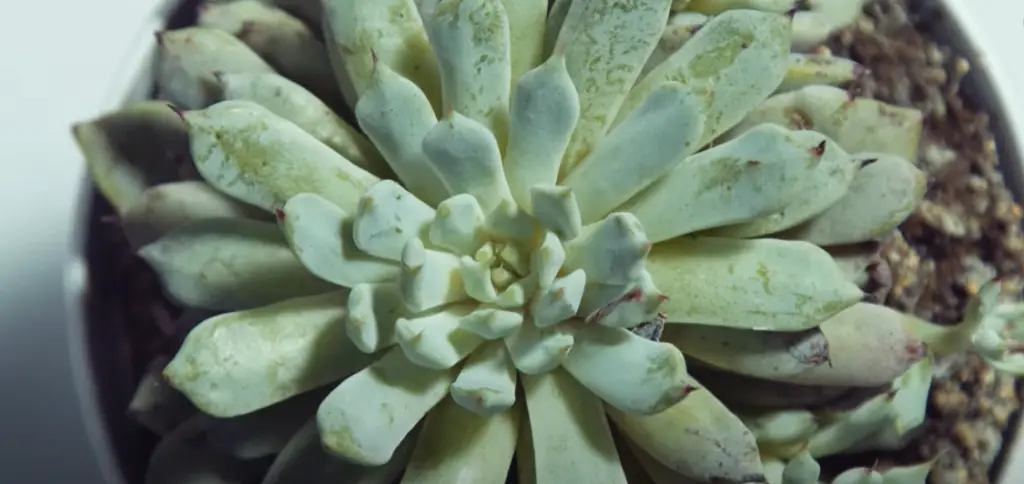
Grow On A Wall For Vertical Interest
If you’re really limited on space, consider growing succulents on a wall. A living wall of succulents is a creative alternative to traditional garden beds and can add a lot of visual interest to small scale spaces. You can purchase ready-made wall planters from your local garden center or create your own using easy-to-find materials such as terra cotta pots, wood planks, and hanging brackets. Just make sure the wall you choose is exposed to plenty of sunshine – succulents love it!
To keep your living wall looking its best, water regularly and fertilize with a mild liquid fertilizer every few weeks. Succulents are generally low-maintenance plants, so you don’t have to worry about pruning or trimming. Just keep an eye out for any pests or diseases and address them quickly if they arise. With a bit of love and attention, your living wall will be flourishing in no time! [2]
Go Bold With Blue Agave
Blue Agave is one of the most striking succulents available and makes a unique statement in any garden. This spiky plant gets its name from its dark blue-green leaves, which make it stand out against other plants. It’s also drought tolerant and can handle almost any climate, making it an ideal choice for small spaces. As a bonus, it looks great in containers or when planted out in the ground.
To make sure your blue agave stays healthy, plant it in well-draining soil and avoid watering too often. Be sure to give it plenty of sunlight—ideally, at least 6 hours each day—and don’t forget to fertilize it when necessary. With just a bit of care, your blue agave can be a showstopper in your garden for years to come. [2]
Grow Edible Succulents
If you’re looking for something different to add to your succulent garden, why not try growing edible succulents? There are many varieties of edible succulents that have a unique flavor and texture which can be used in various recipes. For example, aloe vera is a popular choice as it has antibacterial properties as well as a unique flavor. Others include ice plant, which has a slightly nutty flavor, and purslane, which can be eaten raw or cooked.
Growing edible succulents gives you an opportunity to add some extra health benefits to your garden while still having the beauty of other succulents. They are also relatively easy to grow and can thrive in small spaces. When planting edibles, make sure to research the best soil type for the specific variety of succulent you are growing, as well as optimal sun exposure and water requirements. [2]

Eliminate The Need For Watering
One of the best aspects of succulents is that they don’t require a lot of water. You’ll only need to water them once every week or two, depending on how warm it is outside. By using a self-watering planter, you can eliminate the need for manual watering altogether. Self-watering planters are designed to slowly release water into the soil, so your succulents will stay hydrated without you having to worry about it.
Another option is to use a drip irrigation system. This consists of placing an irrigation line in each pot and connecting them all together with a hose or pipe that goes directly to a water source. The advantage of this system is that it allows you to control exactly how much water each pot receives. This will help prevent your succulents from becoming over-watered or under-watered, keeping them healthy and looking their best for longer periods of time. [2]
Create A Wellness Moment With Aloe Vera
One of the most popular succulents, Aloe Vera is a perfect choice for small indoor garden ideas. This plant is known for its medicinal and beauty properties. It will add an exotic touch to your space while providing you with a natural remedy that’s ready at hand. To keep it healthy, give it plenty of direct light, water it regularly and make sure the soil is well-draining. [2]
Get Creative With A Diy Project
Are you looking for a fun way to bring more beauty and life into your small space? Try making a DIY project out of succulents! There are so many creative ideas that you can do with succulents; from wall gardens, hanging baskets, and planters – the possibilities are endless. If you’re feeling especially ambitious, you can even try making a succulent terrarium!
Using a clear glass bowl or jar with an airtight lid, you can create your own miniature world of plants and soil. You will need to fill the bottom of your container with some stones or small pebbles that will help provide drainage for the roots. After that, you can add a layer of soil and start arranging your succulents. Be sure to use a special potting mix tailored for succulents as regular soils can retain too much water. [2]
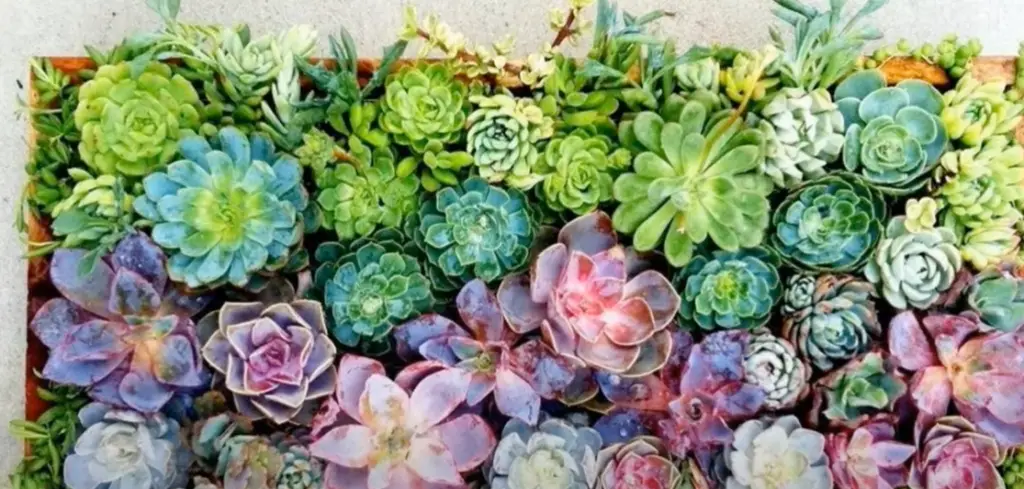
Incorporate Succulents Into Hard Landscaping
If you’re short on space, but want to incorporate succulents into your landscape design, look no further than hard landscaping. This can be anything from seating areas and garden paths to retaining walls and ponds. There are a variety of ways that you can incorporate succulents into these structures without taking up too much space. For example, succulents can be planted along the sides of garden paths and walkways, in between steps to create a unique visual effect, or even used to edge a patio or other seating area. You could also use succulent cuttings to create patterns on outdoor walls or fences.
For do-it-yourselfers, succulents can be used to create vertical gardens and green walls. Just make sure you follow the right techniques and choose appropriate containers before attempting to set up a vertical garden. It’s also important to note that while succulents don’t need as much water as other plants, they still require adequate drainage when planted in these hardscaping elements. [2]
Frame A Seating Area
If you have a small outdoor area, like a balcony or terrace, then it’s worth considering making use of the space. Creating a seating area with plants is one great way to do this. You can add wooden pallets and other furniture to make the area comfortable, while succulents can be planted in wall planters, window boxes and hanging baskets to bring a bit of natural beauty. Succulents come in such a wide variety of colors, shapes and sizes that it’s easy to find something that will work well with any decor. [2]
Arrange Your Plants To Create Unique Color Patterns
If you’re looking for a way to make your succulent garden unique, arranging your plants in interesting color patterns can be an eye-catching option. Selecting plants for their colors can create beautiful visuals and also draw attention to certain areas of the garden. For example, try arranging shades of green together or combine both cool and warm colors for a vibrant effect.
Creating patterns or groups of plants with similar color palettes is an excellent way to emphasize texture and depth in your succulent garden. Whether it be two-toned, three-toned, or even more complex designs, experimenting with unique plant arrangements can make your garden truly stand out. [2]
Vertical Succulent Garden
A vertical succulent garden is an easy way to introduce greenery into small areas. This type of garden can work for both indoor and outdoor spaces, allowing you to have a stunning display without taking up too much real estate. A few large planters, some soil, and the succulents of your choice are all that’s needed to get started. You can place them on a balcony, deck railing, or even hang them from the ceiling for an eye-catching display.
When creating a vertical succulent garden, it’s important to consider the amount of sunlight your plants will be getting. Some succulents require full sun while others prefer more shade. [3]
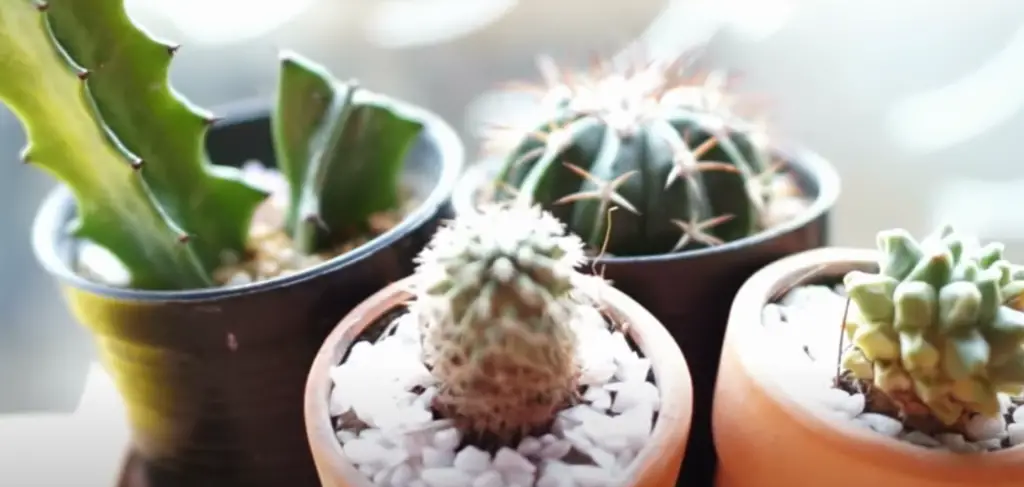
Rock Garden
A rock garden is an ideal way to make a visually stunning succulent garden in a limited space. Carefully arranged stones can give you the perfect canvas on which to showcase your favorite succulents. You can also use other features such as moss, artificial turf, and various decorations to add texture and color to your design. It’s important to note that succulents need plenty of drainage, so make sure you incorporate gravel or other porous material into your rock garden design. You should also consider the size and shape of the rocks you use, as these can help to define the overall look of your garden. With a bit of creativity and some careful planning, you can create a beautiful rock garden in any small space. [3]
Cold-Hardy Succulent Garden
Are you looking to spruce up a small outdoor space with some unique succulent garden ideas? Cold-hardy succulents can be an excellent choice, as they are low maintenance and don’t require much water. Cold-hardy succulents are perfect for smaller spaces that get more sun than shade.
When planting cold-hardy succulents in a container or raised bed, it’s important to ensure the soil has adequate drainage. Cold-hardy succulents need well-draining soil to prevent root rot. You should also avoid placing the container in areas of your yard that receive too much direct sunlight, as this can cause the plants to become scorched and dried out. [3]
Container Succulent Garden
One of the easiest and most cost-effective ways to create a succulent garden in a small space is to use containers. You can find lots of pots, planters, hanging baskets, or other vessels that will hold your plants. And since succulents are incredibly low maintenance, you won’t have to worry about watering them often.
When selecting containers, make sure they have good drainage to avoid overwatering and root rot. Also, consider utilizing items that you already have in your home like old tea cups or mugs, terrariums, or even an old bird bath! The sky’s the limit when it comes to containers for a succulent garden.
To complete the look, use potting mix and gravel or small stones for drainage. If you’re feeling creative you can also add some decorative touches like colorful rocks or figurines to make your succulent garden one-of-a-kind! [3]
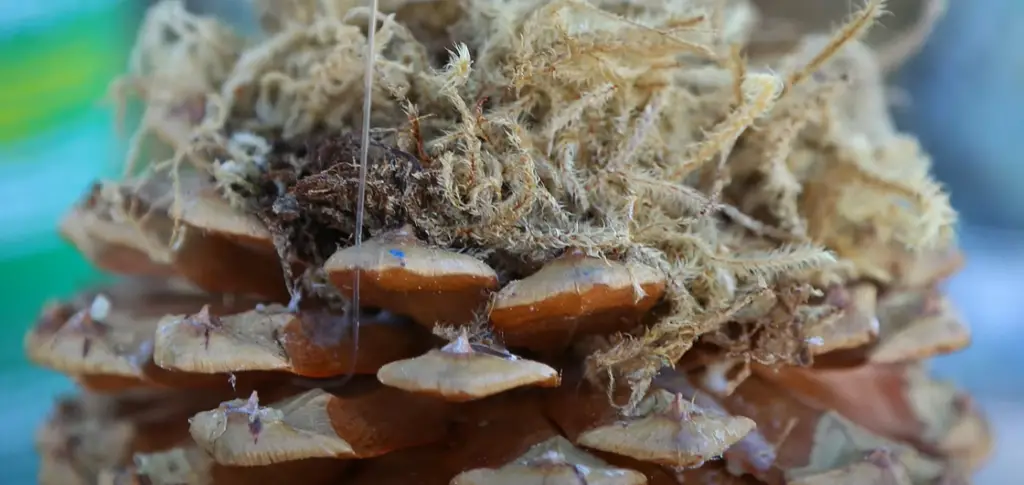
Succulent “Water” Garden
One way to incorporate a magical touch into your succulent garden is with a “water” garden. Create a shallow stream of water and let the succulents grow around it, creating a mini waterfall effect. You can also add in rocks for an even more dreamy look. This type of succulent garden will require some careful construction, but it will definitely bring a unique and beautiful atmosphere to your space.
And if you don’t want an entire “water” garden, you could just add some water features such as small fountains or even birdbaths for the succulents to thrive in. These can be quite attractive additions to any garden and are easy to care for! [3]
Tabletop Succulent Garden
Tabletop gardens are an excellent way to showcase succulent plants in small spaces. With these creative ideas, you can easily make a beautiful succulent garden that fits on your coffee table or desk.
- Terrariums: For a miniature indoor garden, consider creating a terrarium from a glass container with cork lids. Simply fill the bottom of your vessel with small gravel and potting soil, add succulents in a pattern that suits your style, and voila! You have an eye-catching terrarium with minimal work.
- Mason jars: For a simple but sophisticated look, arrange succulents in mason jars filled with soil and gravel. You can hang the jars from a wire or rope for a hanging garden, or simply place them on your tabletop for an efficient display.
- Hanging baskets: Hanging baskets are a great way to incorporate succulents into any space without taking up too much room. All you need is some potting soil, a hanging container, and succulents of your choice. Hang them near a window or in front of an accent wall to add more visual interest to the space.
- Wall planters: Succulents can also be planted directly on the wall using wall planters. These are especially useful for small rooms where floor space is limited. All you need is a planter box and some soil, and you can easily create an attractive vertical succulent garden. [3]
Cactus Garden
For those who love the look of a cactus garden, but don’t have a lot of extra space to spare, there are plenty of creative ways to make it work. From hanging planters to wall-mounted displays, all you need is a bit of creativity and an eye for design.
If you’re really tight on space, consider using a hanging planter. This can be placed on your balcony or patio, and you’ll be able to incorporate several types of cacti in the same pot. As an added bonus, it’s easy to move around when needed. [3]
What Is The Best Thing To Plant Succulents In?
The best type of container to plant succulents in is usually a shallow one. Since succulents don’t need too much moisture and prefer well-draining soil, they need enough room to spread out. You can use just about any type of material as long as it has drainage holes at the bottom—terra cotta, ceramic, plastic, wood, or even hanging baskets.
Another great option is to plant your succulents in recycled materials such as tin cans or tea tins. Just make sure that you punch holes into the bottom for drainage and use a layer of gravel before adding soil and plants. This will help keep the roots from getting too wet. [2]
Do Succulents Need Full Sun?
Yes, succulents do require full sun for optimum growth and blooming. They may be able to survive in partial shade or indirect sunlight, but they will not thrive in these conditions. When planting your succulent garden in a small space, it is best to choose an area that receives the most amount of direct sunlight during the day. If you’re limited on space, choose succulents that don’t need as much sun to thrive. For example, some varieties of Echeveria and Haworthia are adapted to low light conditions. [2]

How Do You Layout A Succulent Garden?
Layout is an important factor when it comes to succulent gardens. It’s best to plan your garden before you start planting. Here are some tips on how to layout a succulent garden:
- Choose a sunny spot or area in your outdoor space. Succulents need ample sunlight for optimal growth, so make sure the area gets 6 to 8 hours of direct sun each day.
- Measure the space and determine the size of your garden. This will help you figure out how many plants, containers, and other materials you need for your succulent garden.
- Choose containers that are appropriate for the type of succulents you’re planting. If you’re planning a vertical succulent garden, consider using hanging baskets or wall planters. For ground-level gardens, use low containers with drainage holes at the bottom.
- Pick out your succulents and place them in the containers or arrange them on the ground according to your layout. You can also add some decorative rocks for an extra touch.
- Place your succulent containers in the chosen area and fill them with potting soil. Make sure to give each plant enough space to breathe and grow.
- Water your succulents regularly and keep an eye out for signs of overwatering like wilting or yellowing leaves. [2]
FAQ
How do I arrange my succulents in my garden?
When arranging your succulents in your garden, it is important to consider the elements of size, color, and texture. Start by grouping together larger succulents with other large succulents that share similar colors or textures. Then fill in the smaller spaces around them with mini succulents. To create a visually pleasing look, alternate the colors and shapes. If you’re short on space, you can use hanging planters or shelves to create a vertical garden.
How do you grow succulents in small spaces?
Succulents are great for small spaces, as they require minimal care and maintenance. They thrive in containers with good drainage and require a minimum of 4 to 6 hours of sunlight per day. When choosing the right container for your succulent garden, make sure it has ample drainage holes to prevent waterlogging. Also, use a soil that is specifically formulated for succulents and cacti.
When it comes to watering, make sure you only do so when the soil is completely dry. Overwatering can lead to root rot and other issues. Once established, you may need to water your succulents once a week or every other week depending on the specific plant.
How do you start a mini succulent garden?
Creating a mini succulent garden is simple and can be done in a few steps. First, pick a container that suits the size of your space and has enough drainage holes. Next, choose the soil – make sure it’s specifically formulated for cacti or succulents. Finally, select some plants to fill your container!
How do you make a succulent bed?
Creating a succulent bed is a great way to display your plants and make an eye-catching display. To start, choose a spot in the garden with full sunshine and good drainage. Once you’ve found the perfect spot, dig down about 8 inches. Then, line the bottom of the hole with landscaping fabric to prevent weeds from growing. Finally, fill the bed with soil formulated for succulents and cacti and arrange your succulents in a pleasing design.
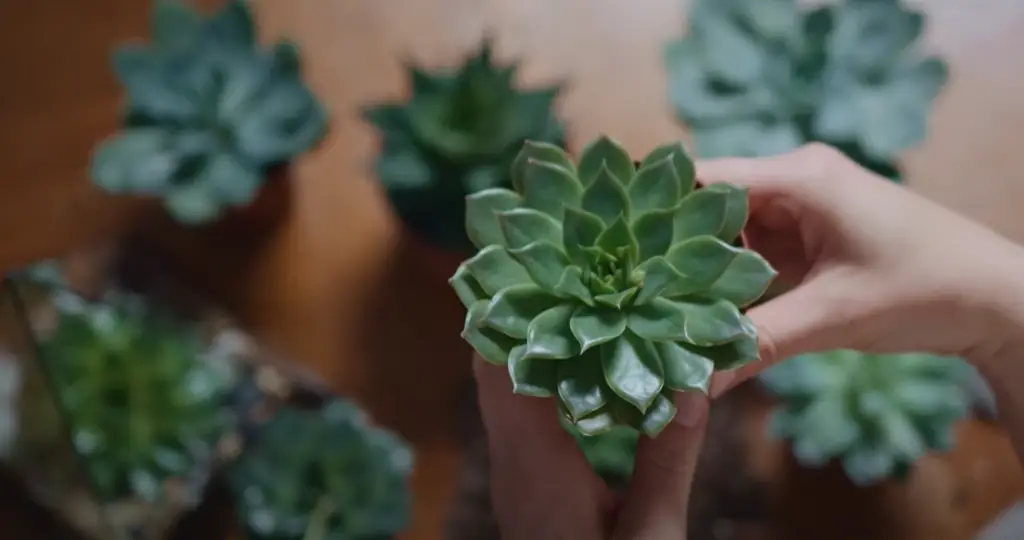
Do succulents like to be crowded?
Succulents prefer to have plenty of space around them in order to thrive. Crowding succulents can lead to poor air circulation and can even cause them to become rootbound, which affects their growth. For small spaces, it’s best to group your plants together in containers with adequate drainage holes and ample soil for the roots to spread out. That way, your plants can still get the sunlight and air they need while staying in a confined space.
Do succulents like sand or soil?
Succulents prefer soil over sand. Sand can be too coarse for succulent roots and doesn’t retain water very well – this can lead to root rot or other issues. For best results, choose a soil specifically formulated for succulents and cacti that is light and drains quickly. This type of soil will allow your succulents to take in the necessary oxygen, water, and nutrients they need to stay healthy.
Useful Video: 10 Succulent Garden Ideas for Small Planting Area
Conclusion
Building a succulent garden in a small space doesn’t have to be daunting. With proper planning and the right selection of plants, you can create a beautiful and unique display that will grace your home for years to come. To get started, prepare the soil, choose your plant varieties carefully, research their needs, make sure you provide adequate lighting and drainage, and water your succulents regularly. With a little patience and creativity, you can build the perfect small space succulent garden!
We hope this article has been helpful in providing some ideas for creating your own unique succulent garden in a small space.
References:
- https://dengarden.com/gardening/Succulent-Gardens
- https://www.gardeningetc.com/design/succulent-garden-ideas
- https://www.backyardgardenlover.com/succulent-garden-ideas/





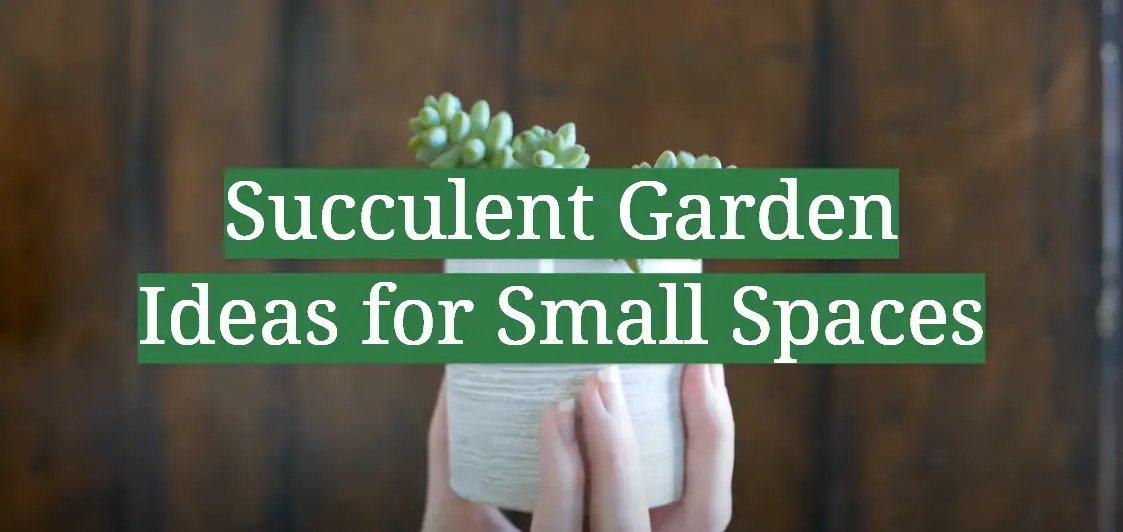




Leave a Reply
View Comments